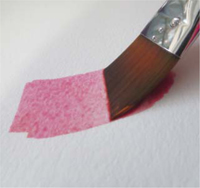
Wet on Dry
Wet paint is applied to dry paper.
Wash is a confusing term; it can refer to the mix of pigments in water you are going to paint with and it also means any painted area on your paper. To avoid confusion, I will use the word wash to refer only to a painted area on your paper and painting mix to refer to the mix of pigments and water you use to paint with.
Laying a wash is one of the fundamental techniques of watercolor painting, but it’s also a tricky technique to master. The size of a wash can be very large, for instance, if it’s part of a background. It can also be very small if it is a detail in your painting. Washes can be flat (the same color and tone all over), graded (a gradual change in color, tone or both) or variegated (different colors and tones in various areas). Most of what you will paint with watercolors can be considered a wash.
Most of the time, the first washes that are painted are background washes. They are usually painted with large soft brushes.

Wet paint is applied to dry paper.
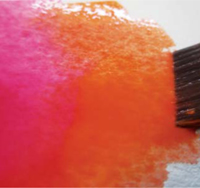
Wet paint is applied to wet paper, or two freshly painted areas of wet paint are allowed to mix on the paper.
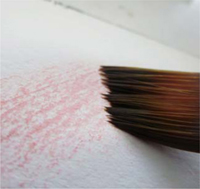
When trying to render certain textures, you can use a drybrush technique, which consists of painting with a brush that is almost dry onto dry paper. Painting dry on dry, the brush carries a bit of paint and very little water.
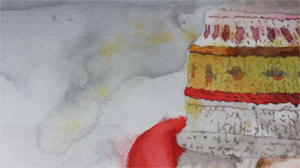
Washes can be flat and almost perfect or show irregularities like back runs. This portrait has a very textured and imperfect background that shows some back runs here and there.
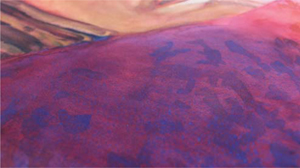
Granulation can be an effective addition to a wash. Here Ultramarine Blue was layered on top of the pink of the beret, resulting in a visible granulation texture.

TOFINO SURFERS
Watercolor on paper
15" × 22" (38cm × 56cm)
The background in this painting is an example of a flat wash created by painting wet on dry: Wet paint was applied to dry paper.